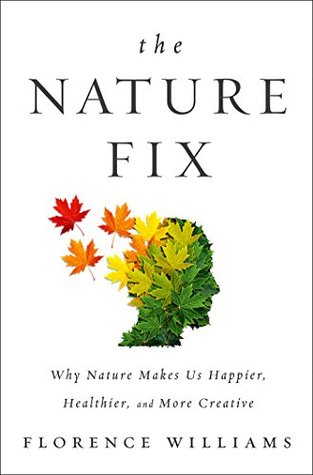More on this book
Community
Kindle Notes & Highlights
And there were a lot of other things they didn’t know: who was best helped, by what mechanisms in the brain and body, what was the right dose, and, moreover, what qualified as “nature”? I personally like Oscar Wilde’s broad definition: “a place where birds fly around uncooked.”
the first chapter takes us to Japan, where researchers are quantifying nature’s role in lowering stress and boosting mental health using a framework based on the biophilia hypothesis, the idea that we feel most “at home” in nature because we evolved there. The second chapter swerves over to Utah, where American neuroscientists are more interested in how nature helps restore our attention-addled brains to a state of sharper cognition. I’ve organized the rest of the book by nature dose. I explore the immediate effects of quick bursts, or “nearby nature” on our three main senses—smell, sound,
...more
Throughout, there will be insights into how we can better construct our days, lives and communities so that everyone gains. Don’t worry; I’m not going to tell you to pitch your smartphone over a waterfall. The world we live in is fully plugged in. But it’s important to call out just how radically our lives have shifted indoors—and what those changes mean for our nervous systems—so that we may hope to ease and manage the transition.
When I pictured shinrin yoku, “forest bathing,” I conjured Sleeping Beauty in her corpse phase, surrounded by primordial trees, twittering birds and shafts of sunlight. You just knew she was somehow taking it all in, and she’d awake refreshed, enlightened and ready for her hot prince.
We knew this because we were on one of Japan’s forty-eight official “Forest Therapy” trails designated for shinrin yoku by Japan’s Forestry Agency. In an effort to benefit the Japanese and find nonextractive ways to use forests, which cover 68 percent of the country’s landmass, the agency has funded about $4 million in forest-bathing research since 2003. It intends to designate one hundred Forest Therapy sites within ten years. Visitors here are routinely hauled off to a cabin to stick their arms in blood pressure machines, part of an effort to provide ever more data for the project. In
...more
I COULDN’T HELP wondering, though, if having more data on how nature changes our brains and immune cells would actually lure more of us into the woods. We also know we’re supposed to eat more leafy greens, but most of us don’t. The kale analogy is pretty apt, because it turns out that even when we don’t like nature, such as during lousy winter conditions, it ends up benefiting us. At least that’s what University of Chicago professor Mark Berman found when research subjects took walks in an arboretum during a blustery winter day. The walkers didn’t enjoy themselves, but they still performed
...more
“I’m a skeptic about the restorative effects of nature,” he told me. “I believe people feel good but I wonder about the mechanism—is it that you’re just away from daily cares and is the benefit that you’re in a new mind-set? Is it just a cheap and easy way to get to a new mind-set?” Dyre thinks being in nature might be no different from playing music or visiting a museum. The experience is diverting, pleasant and sometimes social. Period. And in fact, science has shown that those things—music, friends, cultural events—are good for our mental health. Why should there be something superior about
...more
This highlight has been truncated due to consecutive passage length restrictions.
Paul Atchley was warming up. “Thirty-six percent of people check their cell phones while having sex. Seventy percent of people sleep with their phone.” Strayer: “The average person looks at their phone 150 times day. The average teen sends 3,000 text messages a month. These are hallmarks of an addictive, compulsive personality. We’re wired to have social connection, to sit around the campfire, face-to-face. Social connection is like sugar.”
Ruth Ann Atchley felt the need to reel them in. Passing out sunscreen, she was part hostess, part mediator. “Yes but what is it about nature?” she asked her husband. “You see,” she explained, looking at me, “he argues about getting away from tech and I argue about being in this space. I’m all Disney movies and he’s House of Cards. He thinks people’s nature is negative.” Paul shrugged but didn’t disagree. “My hypothesis,” she continued, “is when you’re engaged in nature, it leads to mindfulness. It’s passive, the world is coming and going. It’s so good for depression. When you walk out in
...more
Ruth Ann Atchley: “You don’t go onto Outward Bound unless you already believe it’s helping you. But they had no idea what we were looking for (in the cognitive tests).” Fournier: “The placebo effects are so strong.” Kramer: “We’re all skeptics.” Paul Atchley, hoisting his daypack: “I’ll cite the X-Files. I want to believe.”
Attention is our currency, and it’s precious. William James, the philosopher, pioneering experimental psychologist and brother of Henry James, devoted an entire chapter of his classic The Principles of Psychology to attention, published in 1890. In it, he writes, “Every one knows what attention is. It is the taking possession by the mind. . . .” and “My experience is what I agree to attend to . . . Without selective interest, experience is an utter chaos.” Notably, James divided attention into two basic types that continue to define the way we think about it: voluntary, active attention (such
...more


